When we think of the fruit produced by trees, our go-to is often the usual apple, pear, plum, etc. But, imagine if there was a tree that produced a pod of candy-floss-filled pulp? Well… You’re in luck because that tree actually exists! Keep reading for trees that start with I.
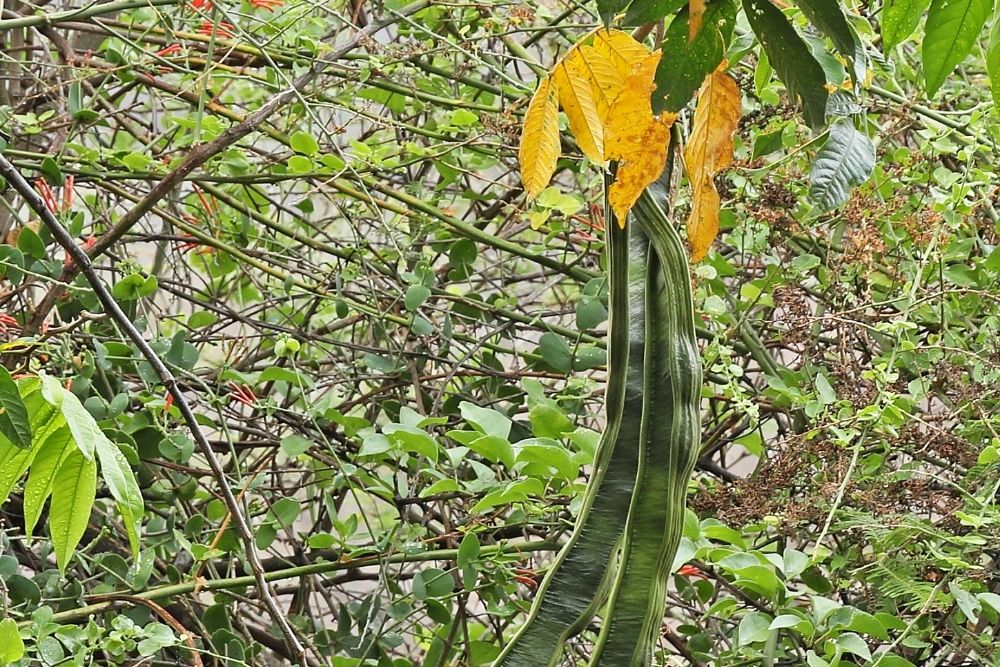
We tend to categorize the names and species of trees in order to make it easy for us to recognize which is which. But, there stands to be incredible diversity within the categories we’ve created for trees.
We underestimate the diversity of nature and all that it has to offer. When we think of trees many of us stop to consider how each one differs or what features they possess.
This post will not only explore the broad variety of a selection of trees beginning with I… We’ll discover their origins and characteristics to see what makes each tree so amazing and unique.
1. Ice Cream Bean Tree
Many have never heard of this unusual tree which sounds somewhat too good to be true. The ice cream bean tree is recognized for producing one of nature’s sweetest treats.
The tree is known for the incredibly sweet fruit that it produces which is said to have a cotton candy-like texture and a sweet, creamy flavor with hints of vanilla and cinnamon. This unique combination of the flavor of the pulp is what gives the unique tree its name.
With its natural sweetness, it’s no surprise that the ice cream bean tree is widely consumed. Its cotton-like pulp has long been popular and frequently used for culinary purposes. Scientifically known as Inga edulis, the ice cream bean tree can commonly be found growing in the tropics of America.
There stand to be hundreds of varieties of the inga tree; each different species produces unique fruit with many edible and each different in flavor, texture, and size.
Botanically, the ice cream bean tree is classified as a member of the legume bean family, and it is an incredibly unique one with its cotton-filled pods.
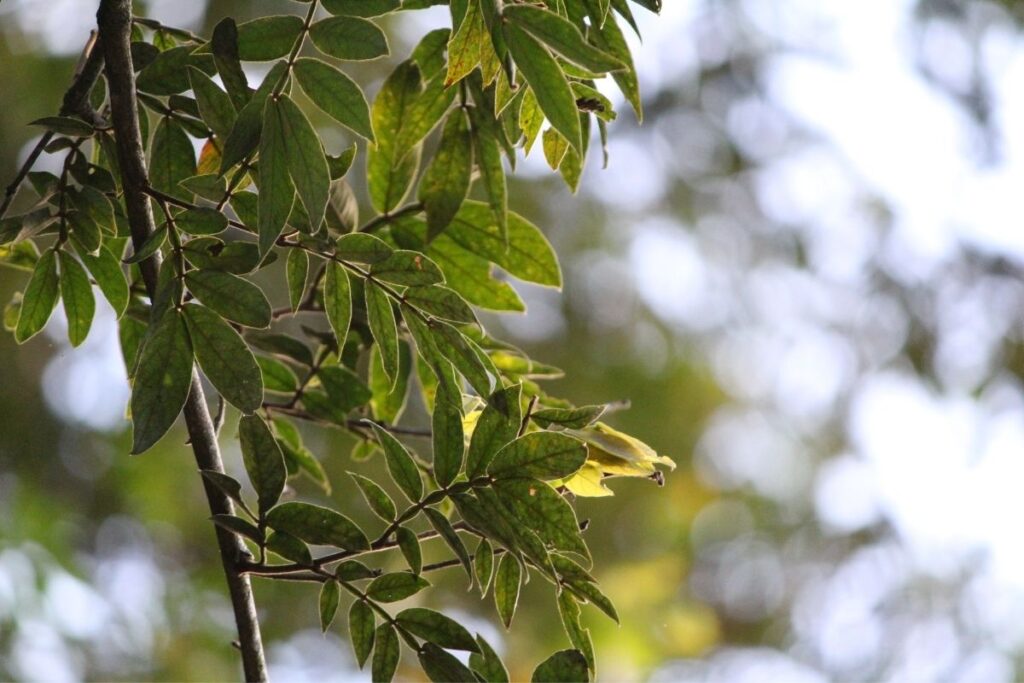
2. Incense Cedar
The incense cedar tree also commonly known as the California incense-cedar is classified as a conifer tree. The coniferous species is native to western North America but can be found growing across America.
Recognized for its great height, the incense cedar can be found growing to exceptional heights of 40 to 60 meters tall. What distinguishes the incense cedar tree from other cedar species, is that it can be recognized by its distinctive orange-brown bark which consists of deep fissures the older the tree gets.
The incense cedar thrives in moderate temperatures and well-drained soil, however, it is considered a durable tree as it can thrive in a variety of soil types.
Commonly cultivated for ornamental purposes, the tree can be found growing in parks and national parks. Historically the tree was commonly used for medicinal purposes, however, it is frequently used for making wooden pencils.
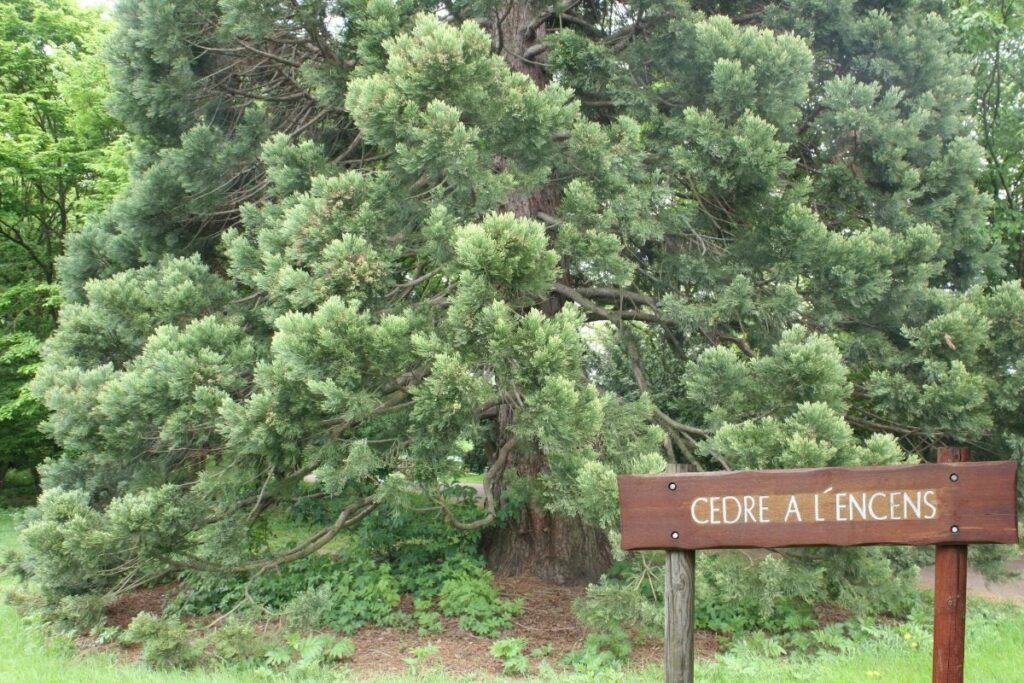
3. Indian Almond
The Indian almond tree, also scientifically known as Terminalia catappa, is classified as a member of the white mangrove family. Mangroves are most commonly recognized for thriving in wet soil and are characterized as hardy trees that can withstand extreme weather conditions.
Native to several regions across the world including Asia, the Pacific, and Australia, the Indian almond tree is known for thriving in subtropical conditions. In ideal conditions, the tree can grow up to 35 meters tall.
The Indian almond tree is recognized for its distinctive structure, it is also known to produce edible fruit that possesses an almond-like center and a flesh that is said to have an acidic taste. Besides its edible fruit, the Indian almond tree is also harvested for its wood.
Its wood is considered to be of value as it consists of a unique red tone and due to its unique mangrove properties, makes for highly strong and water-resistant timber. Hence, across its native regions, the Indian almond trees’ wood is largely used for making canoes.
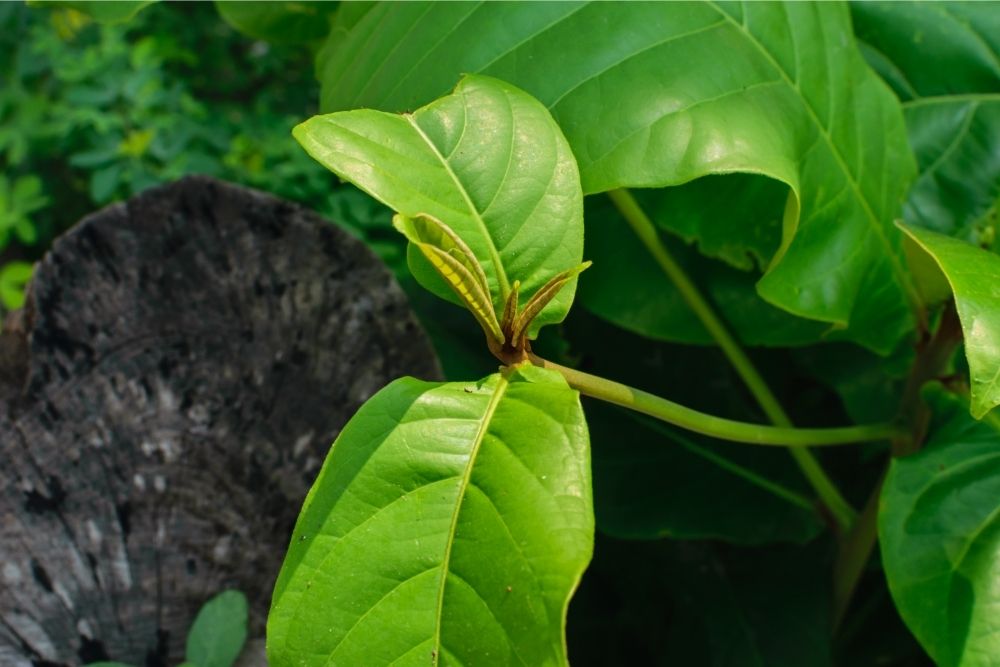
4. Ivory Palm
The ivory plant, also scientifically known as the Phytelephas is classified as a significant member of the palm family that is native to South America. Also commonly called the elephant palm, the ivory palm tree is widely recognized for the solid white center (endosperm) of the seeds produced by the tree.
The solid, ivory-colored seed center is said to resemble the color of elephant ivory. Besides its unique seed, the ivory palm is also recognized for growing to great heights as it can reach up to 20 meters tall.
Due to significant welfare concerns of harvesting elephant ivory, the seed of the ivory palm stands to be a substitute and is commonly referred to as vegetable ivory.
In the same way that elephants used to be used for making jewelry, the seed of the ivory palm is used for similar purposes as a sustainable substitute. Due to its unique purpose, the ivory palm tree is widely cultivated across South America for commercial use.
Additionally, the ivory palm tree is also harvested for its wood which is commonly used for construction.
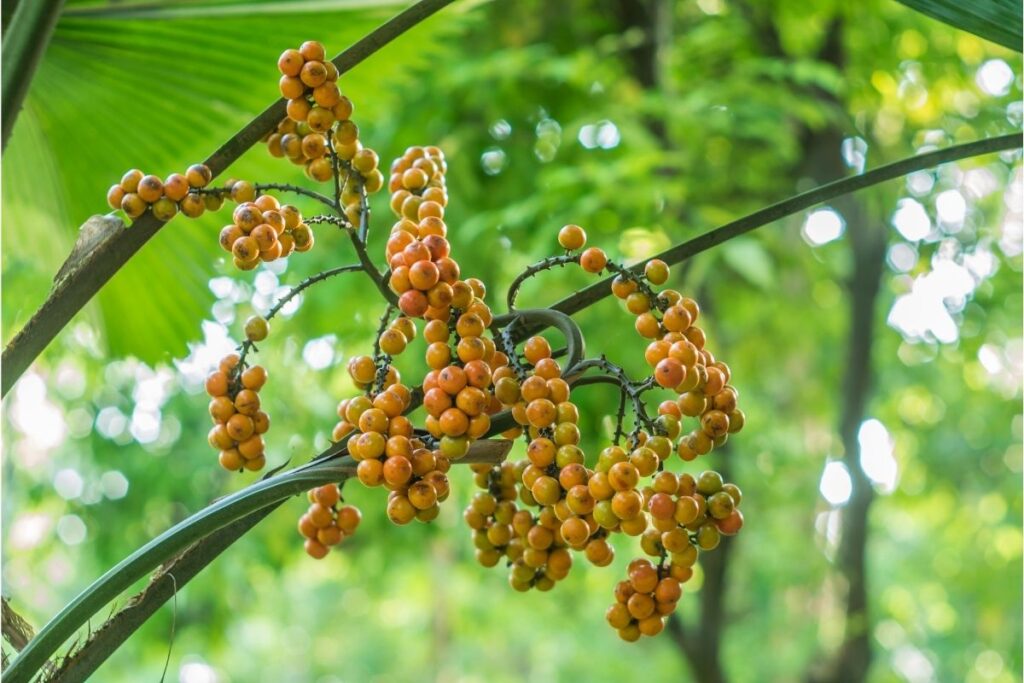
5. Iochroma
The iochroma is characterized as a variety of small trees that are classified as members of the nightshade family. The iochroma variety includes over 34 species each differing in its shape and aroma.
However, on the whole, the iochroma tree is recognized for its distinctively small size and for the bold flowers it produces. Known to thrive in tropical climates, the iochroma tree can be found in South America. It can most commonly be found growing in forestland.
With several species of the iochroma, the free can be found to bloom in a variety of colors including red, pink, white, blue, yellow, and white.
With its bright and attractive tubular shape and strong sweet scent, the flowers of the iochroma are highly popular amongst pollinators such as the hummingbird. Iochromas are widely cultivated across the world for ornamental purposes.
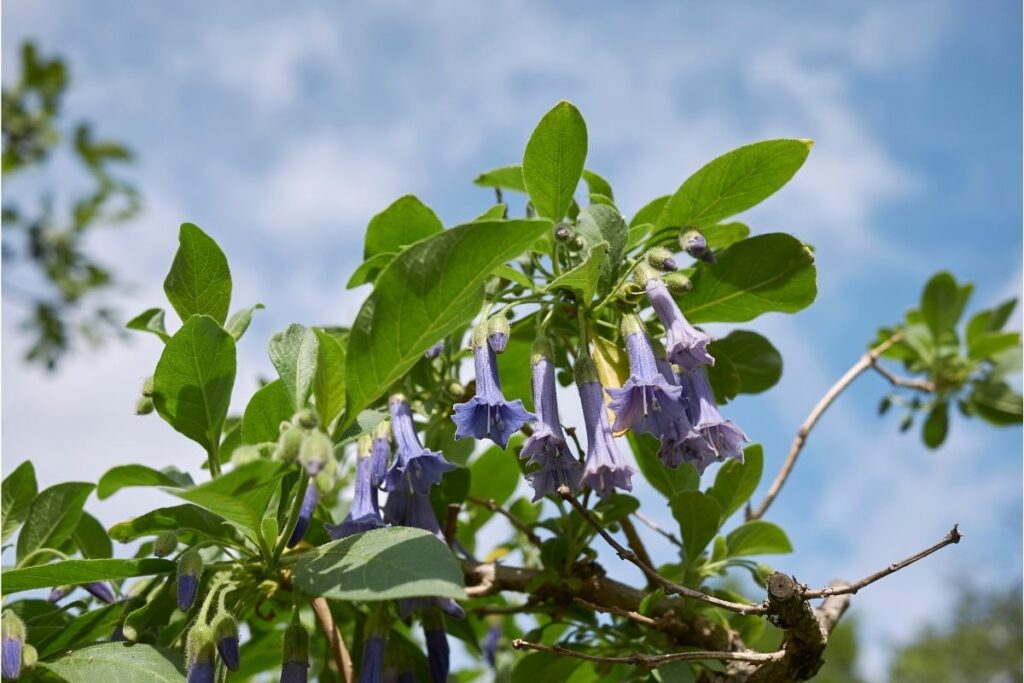
6. Ilex
The ilex, also scientifically known as Quercus ilex, is classified as an evergreen tree and is a member of the oak family. The ilex is recognized by its unique foliage which appears to look more like a holly leaf hence is also commonly referred to as the holly oak.
However, like an oak tree, at a young age, the ilex tree is known to produce acorns that are widely enjoyed by wildlife. The ilex significantly differs from other evergreen oak trees in that it not only consists of unique foliage that is densely packed, it is also known to thrive in a variety of climates.
Though native to regions across the Mediterranean, the ilex tree can be found across Europe. The ilex tree is widely cultivated for ornamental purposes due to its unique appearance.
However, it is also considered to be a significantly hardy tree and is therefore often used as a windbreaker and harvested for its hardwood.
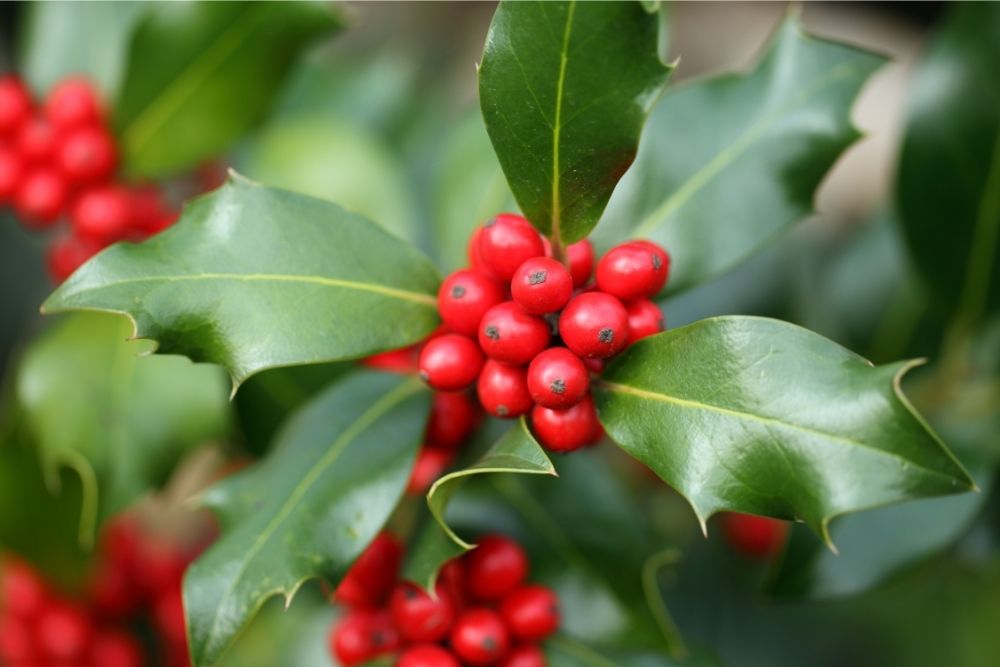
7. Ironbark
The ironbark tree, as its name suggests, is recognized for its incredibly solid wood. Considered to be strong as iron, the ironbark tree is commonly cultivated for harvesting its wood for timber. The uniquely dense tree is native to several parts of Australia and is widely harvested for commercial purposes.
Not only is the tree recognized for its incredible strength, but it is also recognized for its unique color as the bark of the tree consists of a unique grey-black shade.
The wood of the ironbark is seen to be of considerable value not only for its strength and color but also its unique properties such as its being termite, heat, and fire-resistant.

8. Ironwood
The ironwood tree, scientifically known as Olneya tesota, is classified as a member of the legume and pea family. The tree is widely recognized for its hardy nature. The plant is known to thrive in extreme desert conditions as it can commonly be found growing across the Sonoran desert.
The ironwood tree is not only recognized for its extreme durability but is also widely recognized for its unique blue leaves. However, when the plant is enduring extreme drought or extreme cold, it is known to conserve its energy by losing its leaves.
Due to its incredibly hardy wood, the ironwood tree is harvested for its wood. However, its incredibly strong wood is considered to be difficult to harvest, hence, the tree is not widely cultivated.

Key Takeaway
So, there you have it… a great list of unique trees that start with I. Each tree presented differs and offers something special, whether it be the fruit that it bears, the bold color of its flowers, or a unique characteristic that it may possess.
From bark as strong as iron to trees that produce fruit that tastes just like ice cream, this glossary of trees exemplifies the diversity of nature and the marvels that the world of trees has to offer. And to think, we’ve only touched on trees that start with I… Imagine just how much more is on offer!
Editor’s Recommendations
Blacked Out: 24 Different Types Of Black Trees







